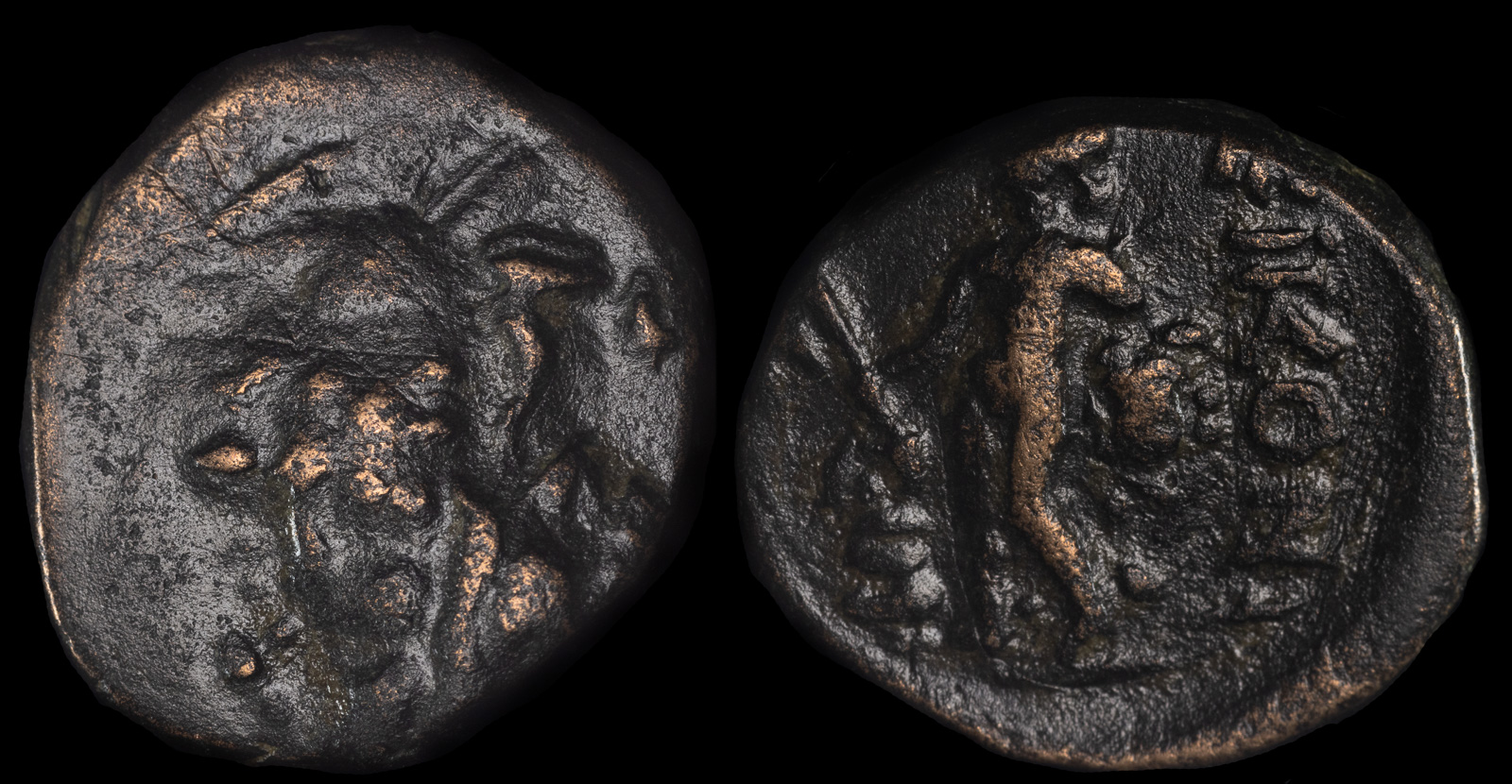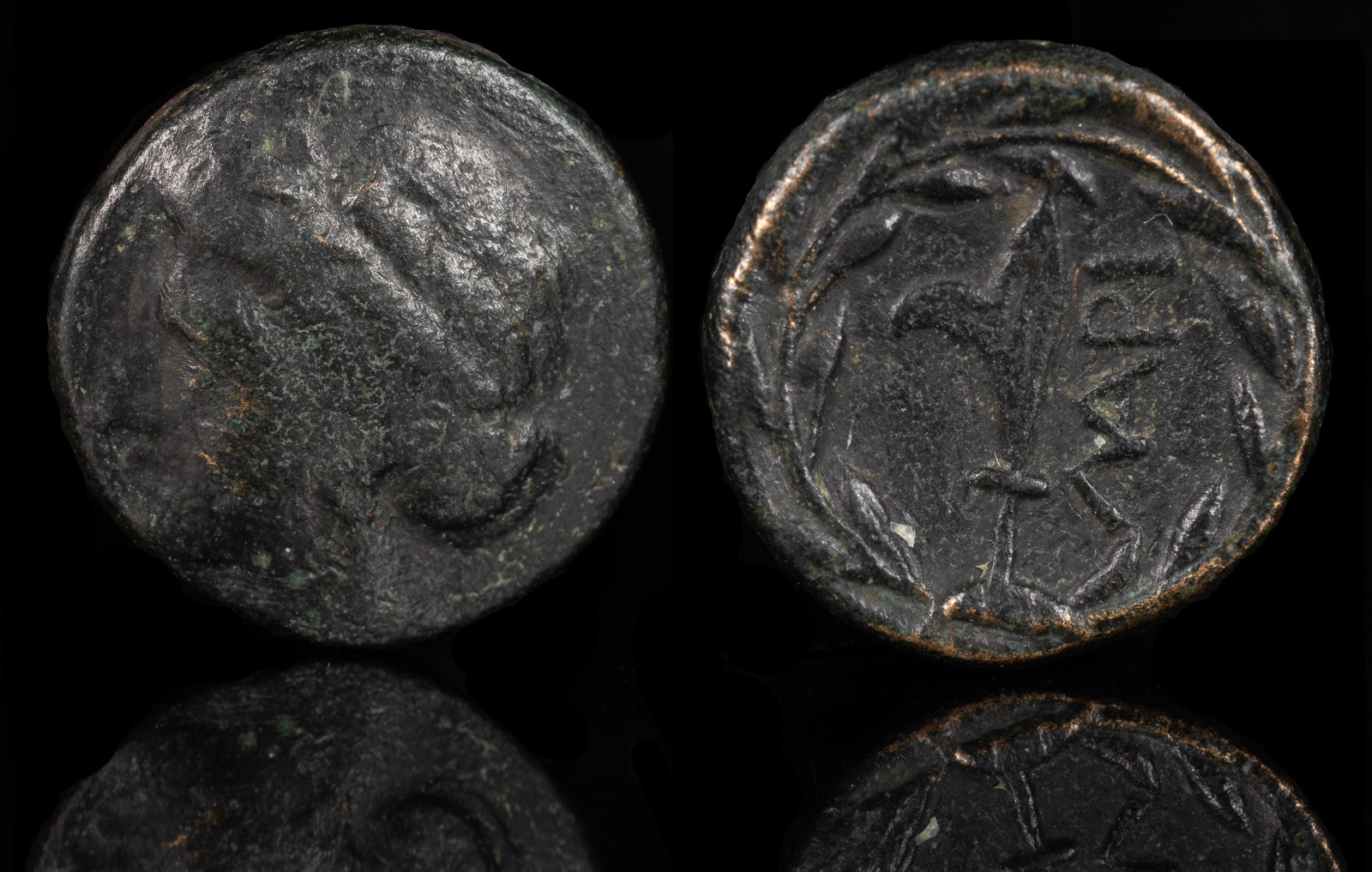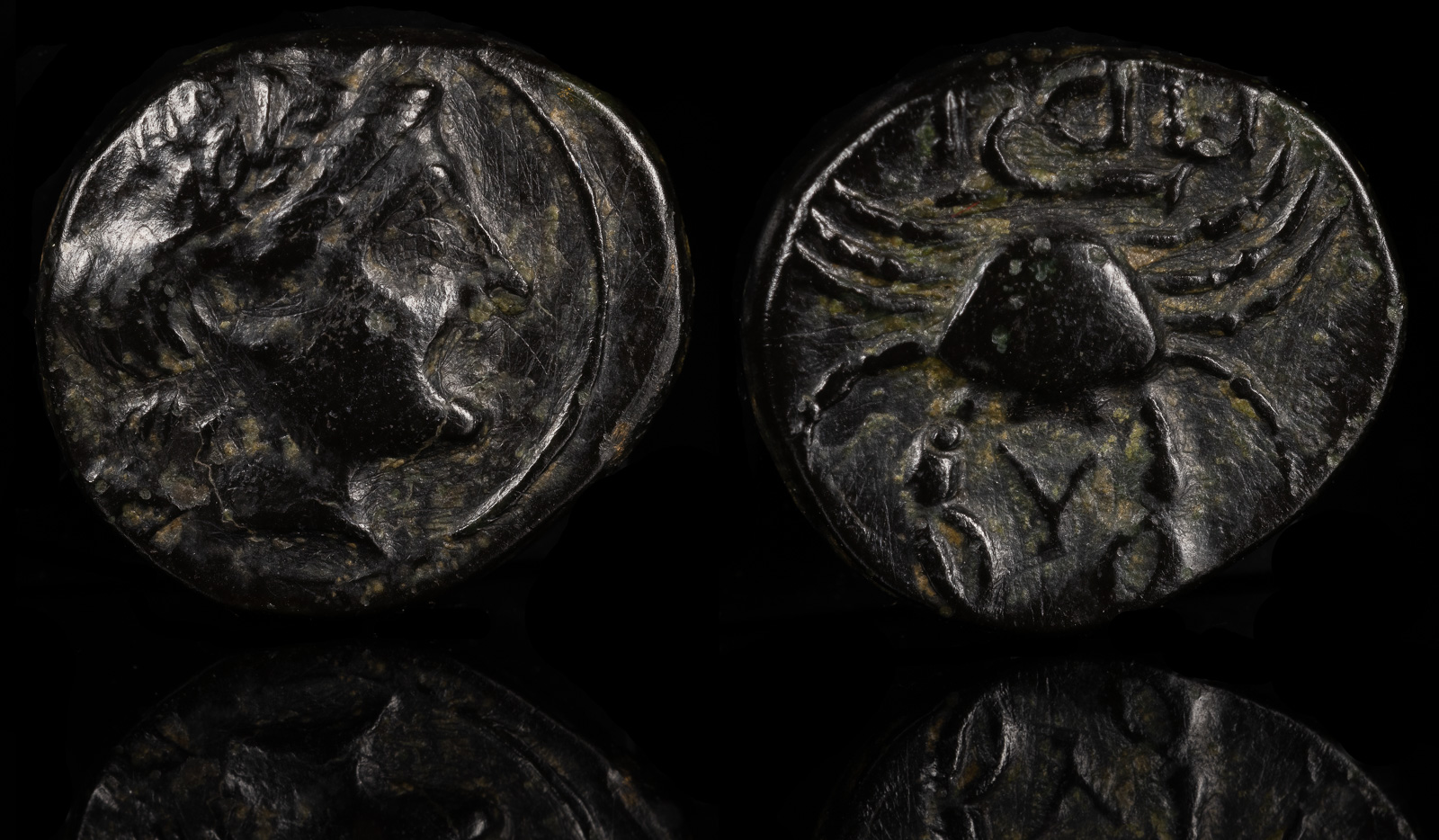Harpa
View All Tags
In particular, the harpa was commonly associated with Heracles (Hercules in Roman mythology), one of the most celebrated heroes in Greek mythology. Heracles was often depicted wielding a harpa in artistic representations, as he was shown using the weapon to slay monsters or perform the Twelve Labors. This connection to Heracles imbued the harpa with symbolism tied to heroism, courage, and the triumph of good over evil. When featured on coins, particularly those minted by cities or regions that revered Heracles, the harpa functioned as a powerful symbol of divine favor and military success.
In addition to its association with heroism, the harpa also had connections to the agricultural realm, due to its resemblance to a sickle used for harvesting crops. This gave the harpa a dual meaning, symbolizing not only martial prowess but also fertility and the connection between war and sustenance. The harpa’s curved shape, resembling the sickle, reflected the importance of agriculture in sustaining Greek society, suggesting a balance between the need for protection and the nurturing of the land and its people. In this sense, the harpa on a coin could evoke the idea of the defender of the land, a figure who was both a protector and a provider.

Lycaonia, Eikonion
circa 100-0 BCE
Æ 15mm, 3,84g
Obv : Laureate head of Zeus right.
Rev : ЄIKONIЄωN. Perseus standing left, holding harpa and head of Medusa
SNG France 2272-2276; Aulock Lykaonien 252; HGC 7, 789

Thessaly, Larissa Kremaste
c. 302-286 BCE
Æ Chalkous 12mm, 1.76g, 12h
Wreathed head of nymph l.
R/ Harpa within olive wreath tying below.
BCD Thessaly II 405.1; HGC 4, 17

Mysia, Priapos
11.52mm, 1.11g 300-200 BCE
Obverse: Laureate head of Apollo right
Reverse: A / ΠPI, crab, harpa below
SNG von Aulock 7526
Ex Marc Breitsprecher